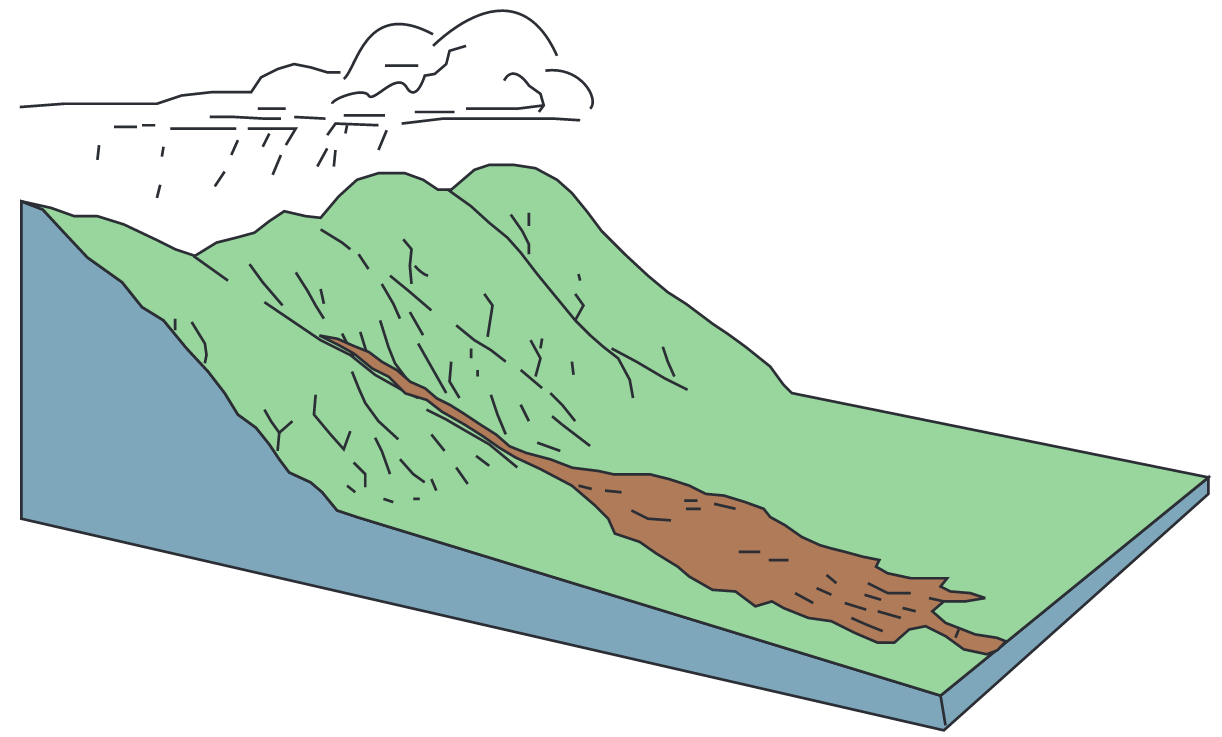Within the classification of landslides debris flows occupy a special status.
In general, they belong to the processes of flowing and affect loose material/sediments - this can be soil, rock or organic material - but they also include dynamics of sliding (preliminary stage) and falling (material accumulation/trigger). They have no associated shear zones, process velocity can be very high (up to m/sec) and they need a transportation matrix of some kind - mostly this is water, but it can also be fine sediment. Depending on the composition of water, rock and soil, the process is further subdivided in e.g. mudslides, earth flows and debris flows. The trigger is water supply (e.g. precipitation, snowmelt), the associated reduction in pore water pressure and friction (Huggett 2011, Bierman & Montgomery 2014).
Translational or rotational slides may evolve into an earth or debris flow, provided internal cohesion to be further reduced by e.g. water.
A complex process of this kind can be found at the at the Hofermühle site.
Figure 3: Schematic figure of a debris flow (Source: Highland & Bobrowsky, 2008).
Literature
Bierman, P. R. & D. R. Montgomery. 2014. Key concepts in geomorphology. New York, NY: Freeman [u.a.].Highland, L. & Bobrowsky, P.T., 2008. The landslide handbook: a guide to understanding landslides, US Geological Survey Reston, VA, USA.Huggett, R. J. 2011. Fundamentals of Geomorphology. London: Routledge.
